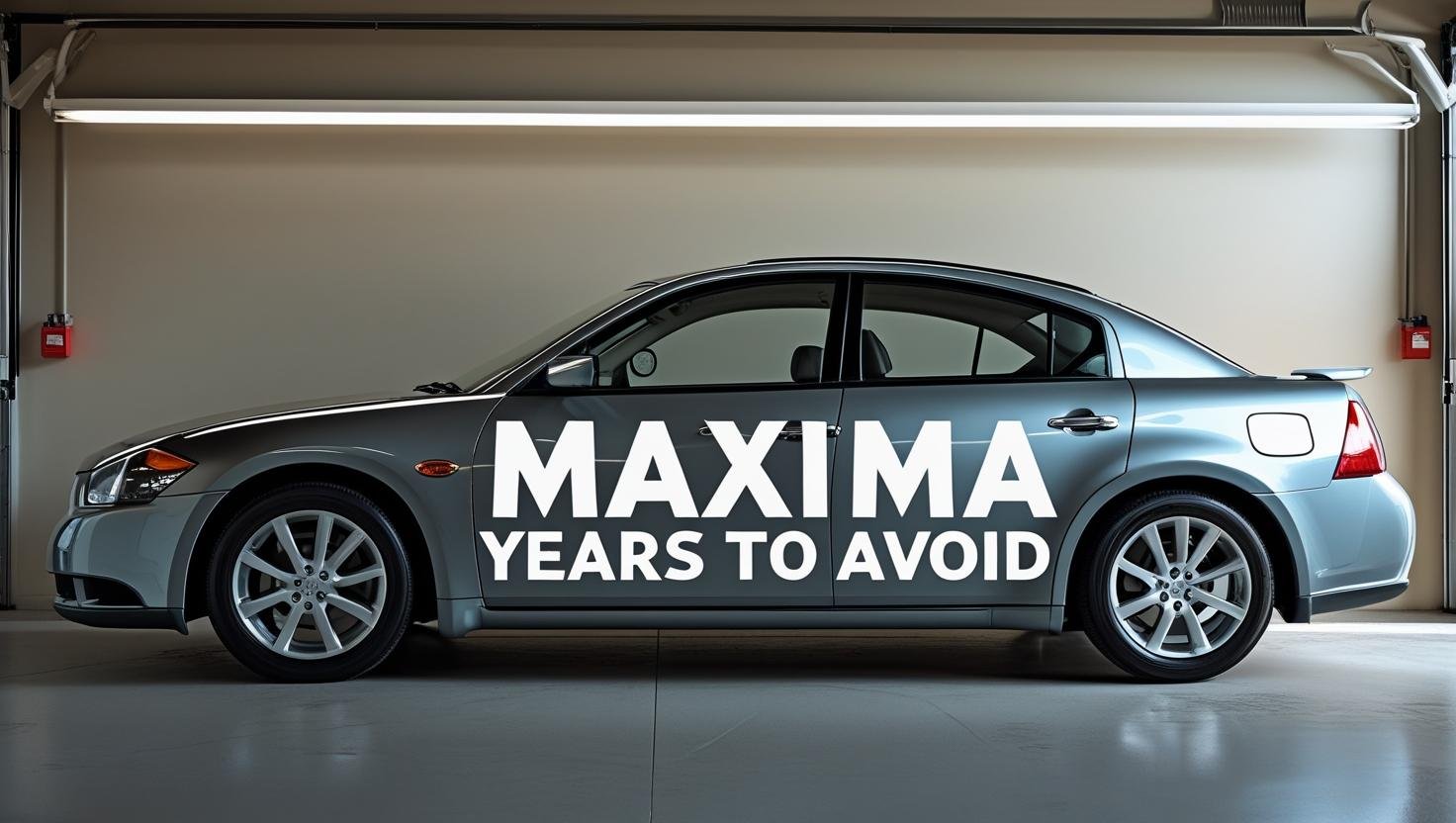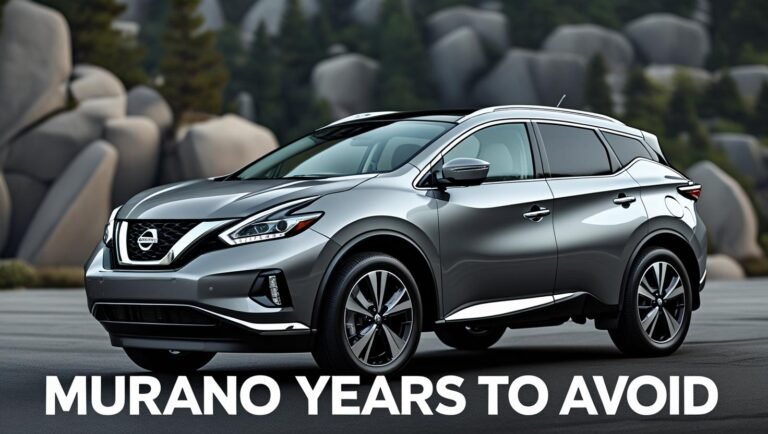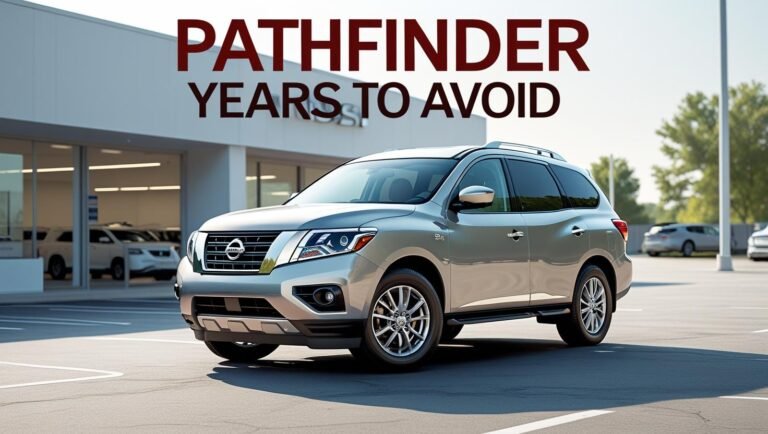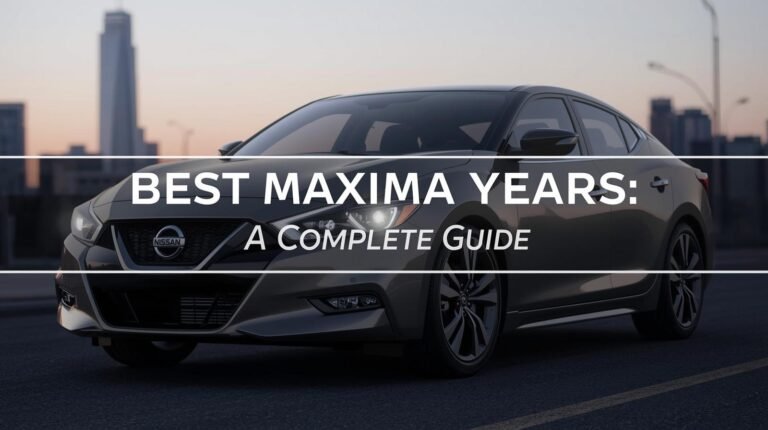Nissan Maxima Years to Avoid (Transmission Issues and more)
Title: Nissan Maxima Years to Avoid (Transmission Issues, Engine Problems & More) The Nissan Maxima has earned a reputation as the “Four-Door Sports Car,” blending sedan comfort with sporty performance. While many model years live up to this title, others have been plagued by mechanical problems, particularly with transmissions and suspension systems. In this detailed guide, we’ll cover the Nissan Maxima years to avoid, why they’re risky, and which models you should consider instead.
History of the Nissan Maxima
The Nissan Maxima first appeared in the U.S. market in 1981, originally as the Datsun Maxima before adopting the Nissan name. Over eight generations, it evolved from a practical family sedan into a sportier, more luxurious offering. By the early 2000s, the Maxima had become a favorite among drivers wanting a spacious yet athletic sedan, often powered by Nissan’s acclaimed V6 engines.
Nissan Altima Years to Avoid: Full Guide with Common Issues
Nissan Pathfinder Years to Avoid (CVT Problems )
Nissan Murano Years to Avoid (And Why They’re Risky
Nissan Maxima Engine & Performance
Across its history, the Maxima has typically been powered by a V6 engine, most notably the VQ-series V6, a powerplant widely regarded for its balance of performance and durability. Recent models feature a 3.5-liter V6 producing over 290 horsepower, paired with a CVT for smooth acceleration and improved fuel economy. However, the CVT’s reliability varies greatly depending on the model year, which is why knowing which years to avoid is essential.
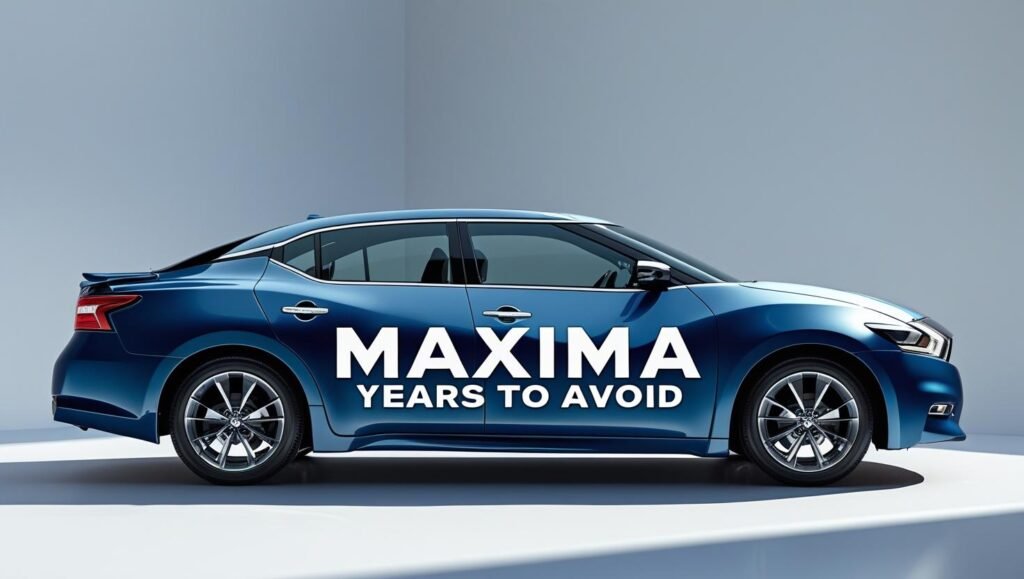
Nissan Maxima Years to Avoid
While the Maxima has plenty of solid years, the following models have higher-than-average reports of expensive failures:
- 2004
- 2005
- 2006
- 2007
- 2008
- 2010
- 2016
Nissan Maxima 2004
The 2004 Nissan Maxima is a midsize sedan that blends performance, comfort, and reliability, making it a popular choice among used car buyers. Powered by a robust 3.5-liter V6 engine producing 265 horsepower, the 2004 Maxima delivers smooth acceleration and responsive handling. Its spacious interior, high-quality materials, and comfortable seating make it ideal for long drives. Standard features include power accessories, cruise control, and a premium audio system. However, some owners report issues with the automatic transmission, suspension components, and premature wear of interior parts. Regular maintenance is crucial to keep the vehicle running efficiently. The 2004 Maxima offers a balance between sporty driving and daily practicality, making it a strong contender in the used sedan market. For buyers seeking a stylish, powerful, and comfortable vehicle, the 2004 Nissan Maxima remains a solid option, provided its mechanical condition is thoroughly inspected before purchase.
why to avoid Nissan Maxima 2004 – 2008
- Premature suspension wear (control arms, bushings, struts)
- Engine mounts failing early
- Electrical issues with power windows, seats, and lighting systems
Nissan Maxima 2010
The 2010 Nissan Maxima is a stylish full-size sedan that combines sporty performance with everyday comfort. Equipped with a 3.5-liter V6 engine producing 290 horsepower, the 2010 Maxima delivers strong acceleration and confident highway passing power. Its continuously variable transmission (CVT) ensures smooth gear transitions, while the sport-tuned suspension offers responsive handling. Inside, the cabin features high-quality materials, comfortable seating for five, and advanced options like a navigation system, leather upholstery, and premium audio. Safety is enhanced with standard features such as stability control, anti-lock brakes, and multiple airbags. However, some owners have reported issues with the CVT transmission, brake wear, and steering components. With regular maintenance, the 2010 Maxima offers long-lasting reliability and a balance of performance and luxury. For buyers seeking a powerful yet practical sedan, the 2010 Nissan Maxima remains a strong choice in the used car market.
By 2010, Nissan had transitioned the Maxima to a Continuously Variable
Transmission (CVT). While smooth in theory, early CVTs often overheated, lost power under load, and triggered “limp mode.”
Nissan Maxima 2016
The 2016 Nissan Maxima stands out for its bold styling, strong V6 engine, and premium interior, but it is not without its problems. One of the most common issues reported by owners is related to the CVT (continuously variable transmission), which can cause hesitation, shuddering, or slipping during acceleration. Some drivers have also noted premature brake wear, requiring more frequent replacements than expected. Steering-related concerns, such as vibration or pulling to one side, have been mentioned, along with occasional suspension noises over rough roads. Additionally, certain infotainment system glitches, like screen freezing or slow response, have been reported. While these issues may not affect every 2016 Maxima, they emphasize the importance of a thorough inspection before purchase. By being aware of 2016 Nissan Maxima problems, buyers can make an informed decision and ensure proper maintenance to keep the vehicle performing at its best for years to come.
The 2016 Maxima launched with a bold redesign and upscale features, but it also brought:
- CVT failures under 60,000 miles
- Infotainment freezes and software bugs
- Steering vibration issues at highway speeds
Given the price of repairs, buying a 2016 without a warranty can be risky.
Better Nissan Maxima Years to Consider
- 2014 – Strong V6 performance, fewer CVT complaints
- 2015 – Reliable pre-redesign year
- 2018–2020 – Updated CVT design, better safety features, high owner satisfaction
Common Nissan Maxima Problems Across Bad Years
- Transmission Issues (Automatic & CVT) – The most frequent and costly problem.
- Suspension Wear – Clunking noises and uneven tire wear.
- Electrical Problems – Infotainment malfunctions, dashboard failures, and sensor issues.
- Engine Mount Failures – Causing vibration and roughness during driving.
FAQ Nissan Maxima Years to Avoid
Q1: What is the worst year for the Nissan Maxima?
A: The 2004–2006 models are widely regarded as the worst due to major automatic transmission failures and costly suspension repairs.
Q2: Do all Nissan Maximas have CVT problems?
A: No, but issues are common in early CVT models like 2010 and 2016. Later years improved with updated designs.
Q3: What engine does the Nissan Maxima use?
A: Most modern Maximas use the 3.5L VQ-series V6, known for strong performance and potential longevity beyond 200,000 miles if well maintained.
Q4: How long does a Nissan Maxima last?
A: With regular maintenance, a Maxima can often reach 200,000+ miles.
Final Thoughts Nissan Maxima Years to Avoid
The Nissan Maxima remains one of the more exciting large sedans on the used market, but choosing the wrong model year can lead to high repair bills. Avoid the problematic years, verify service history, and invest in a professional pre-purchase inspection to ensure a smooth ownership experience.
